
Delft is a city and municipality in the province of South Holland, Netherlands. It is located between Rotterdam, to the southeast, and The Hague, to the northwest. Together with them, it is a part of both the Rotterdam–The Hague metropolitan area and the Randstad.

Delftware or Delft pottery, also known as Delft Blue or as delf, is a general term now used for Dutch tin-glazed earthenware, a form of faience. Most of it is blue and white pottery, and the city of Delft in the Netherlands was the major centre of production, but the term covers wares with other colours, and made elsewhere. It is also used for similar pottery, English delftware.
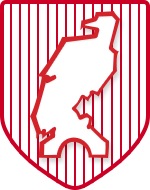
Sint Jansbrug is a coed student society in the city of Delft in the Netherlands, founded in 1947. As of 2024, it has roughly 650 members, and owns three historic buildings in the Oude Delft, a street in the centre of Delft. All are national heritage sites.
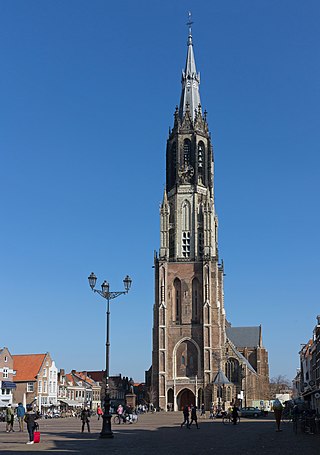
The Nieuwe Kerk is a Protestant church in the city of Delft in the Netherlands. The building is located on Delft Market Square (Markt), opposite to the City Hall. In 1584, William the Silent was entombed here in a mausoleum designed by Hendrick and Pieter de Keyser. Since then, members of the House of Orange-Nassau have been entombed in the royal crypt. The latest members to have been entombed are Queen Juliana and her husband Prince Bernhard in 2004. The private royal family crypt is not open to the public. The church tower, with the most recent recreation of the spire, was designed by Pierre Cuypers and completed in 1872. It is the second highest in the Netherlands, after the Domtoren in Utrecht.

HetPrinsenhof is a museum in the city of Delft in the Netherlands. Formerly the monastery of St Agatha, the building changed purpose over time. The whole building came into the possession of Delft City Council by 1925, who gradually converted the building into a museum. Today, the museum shows a variety of art from Dutch Golden Age paintings, prints, cermaics and contemporary art.
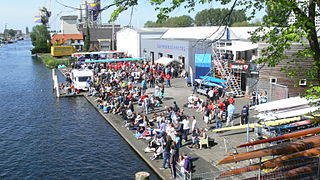
DSR Proteus-Eretes is a student rowing club in Delft, Netherlands, with more than 850 members.
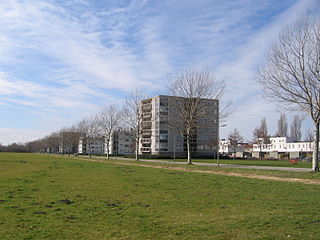
Tanthof is a quarter in the South of Delft, the Netherlands. It was built in the 1970s and 1980s and consists mainly of low-rise buildings. The area is divided in two parts, Tanthof-East and Tanthof-West.

Delftse Poort is a twin-tower skyscraper complex at Weena 505 next to the Rotterdam Centraal railway station in Rotterdam, Netherlands. Tower I is 151.35 m (496.6 ft) with 41 stories, and Tower II is 93 m (305 ft) with 25 stories. Until May 2009, Tower I was the tallest office tower in the Netherlands. Both towers are built over a 4-storey multifunctional podium which adjoins the Rotterdam central station. The entire complex has 28 elevators. The gross floor area in the complex is 106,000 m2 (1,140,000 sq ft), and the offices occupy 66,000 m2 (710,000 sq ft).

The Koninklijk Nederlands Legermuseum is the former national museum of the Dutch Army. Until 2013, it was located in the Armamentarium in Delft. In 2013 it was merged with the Militaire Luchtvaartmuseum, based on the former airbase at Soesterberg, where the new merged museum is based and where its new stores were opened on 13 May 2009 by Jeroen Sikkel, Secretary General for Defence.
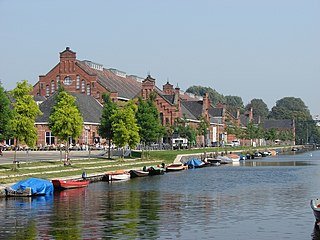
The Westergasfabriek is a former gasworks in Amsterdam, the Netherlands, now used as a cultural venue.

Agneta Wilhelmina Johanna van Marken-Matthes was a Dutch entrepreneur. She and her husband Jacques van Marken were involved in the manufacture of yeast throughout their lives, and were engaged in the co-operative movement, taking care of their workers. Matthes and Van Marken created living quarters for workers in her hometown, Delft in South Holland, named Agnetapark after her. These are considered a model for the co-operative development and construction of garden cities for workers. Matthes founded and ran a Delft perfume factory, Maison Neuve, to take advantage of a by-product from the yeast factory.

Pieter Biesboer, is a Dutch art historian and prolific writer on 17th-century Dutch art. His specialty is art from Haarlem.

Chris Dagradi is an American artist, who lives and works in the Netherlands since 1978. He works as painter, sculptor and ceramist.
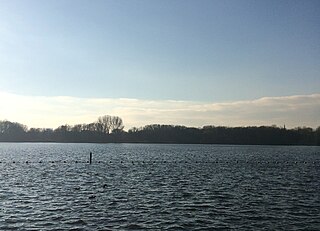
Delftse Hout is a district in the northeast of Delft, Netherlands. Delftse Hout has about 300 inhabitants.
Abraham van der Weijden, a Dutch citizen, was a ship's captain and the initiator of Freemasonry in South Africa.
Aafje Looijenga-Vos was a Dutch crystallographer. She was a professor for general chemistry and later for structural chemistry at the University of Groningen.
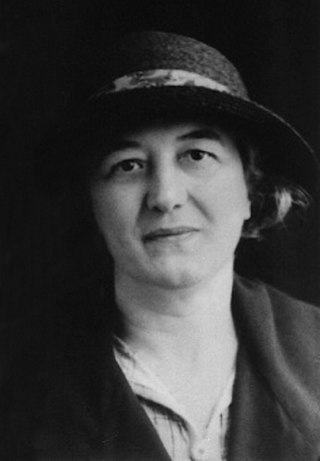
Maria Elisabeth (Marie) Stellwag-Bes was a Dutch chemical engineer and city councillor in Delft for the Vrijzinnig Democratische Bond. She is considered to be the first woman to receive an engineering diploma in the Netherlands and was one of the first three female city councillors in Delft.
Hugo Tutein Nolthenius was a Dutch industrialist and art collector.
Tristan Danique "Dani" van den Heuvel is a Dutch professional footballer who plays as a goalkeeper for Belgian club Club Brugge.

De Roos, also locally known as Roosmolen or Koren op de Molen, is a wind and platform mill situated within the municipality of Delft, in the South Holland province of the Netherlands.
















